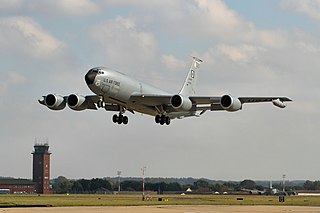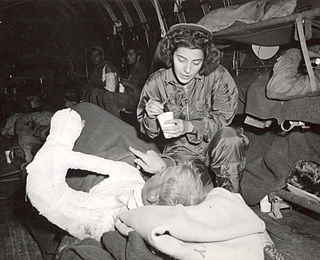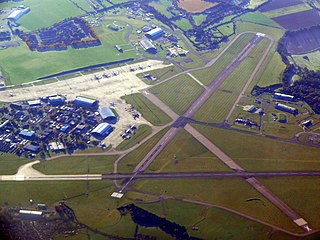Related Research Articles

Operation GRANBY, commonly abbreviated Op GRANBY, was the code name given to the British military operations during the 1991 Gulf War. 53,462 members of the British Armed Forces were deployed during the conflict. The total cost of operations was £2.434 billion (1992), of which at least £2.049 billion was paid for by other nations such as Kuwait and Saudi Arabia; £200 million of equipment was lost or written off.

Ministry of Defence Lyneham, otherwise known as MOD Lyneham is a Ministry of Defence site located 6.3 miles (10.1 km) northeast of Chippenham, Wiltshire and 10.3 miles (16.6 km) southwest of Swindon, Wiltshire, England. The site houses the Defence School of Electronic and Mechanical Engineering. Also here is Prince Philip Barracks, housing the regimental headquarters of the Royal Electrical and Mechanical Engineers (REME), 8 Training Battalion REME and the REME Museum.

Royal Air Force Brize Norton or RAF Brize Norton in Oxfordshire, about 75 mi (121 km) west north-west of London, is the largest station of the Royal Air Force. It is close to the settlements of Brize Norton, Carterton and Witney.

No. 99 Squadron is a squadron of the Royal Air Force which operates the Boeing C-17 Globemaster III strategic/tactical transport aircraft from RAF Brize Norton.

Royal Air Force Mildenhall, more commonly known as RAF Mildenhall, is a Royal Air Force (RAF) station located near Mildenhall in Suffolk, England.

The David Grant USAF Medical Center (DGMC) at Travis Air Force Base in Fairfield, California, is the U.S. Air Force’s largest medical center in the continental United States and serves military beneficiaries throughout eight western states. It is a fully accredited hospital with a National Quality Approval gold seal by the Joint Commission, and serves more than 500,000 Department of Defense and Department of Veterans Affairs Northern California Health Care System eligible beneficiaries in the immediate San Francisco-Sacramento vicinity from 17 counties covering 40,000 square miles. DGMC is named in honor of Dr. David Norvell Walker Grant, USAAF, MC (1891-1964), the first Surgeon General of the U.S. Army Air Corps and U.S. Army Air Forces.

The Royal Auxiliary Air Force (RAuxAF), formerly the Auxiliary Air Force (AAF), together with the Air Force Reserve, is a component of Her Majesty's Reserve Air Forces. It provides a primary reinforcement capability for the regular service, and consists of paid volunteers who give up some of their weekends, evenings and holidays to train at one of a number of squadrons around the United Kingdom. Its current mission is to provide trained personnel in support of the regular RAF. Queen Elizabeth II is Air Commodore-in-Chief of the RAuxAF.

The 23d Aeromedical Evacuation Squadron was a unit of the United States Air Force. It was activated on 1 July 1994, the same day the 1st Aeromedical Evacuation Squadron was inactivated. On 1 April 1997, the 23 AES was inactivated and the 43rd Aeromedical Evacuation Squadron activated as part of the 43rd Operations Group under Air Mobility Command.

The 1st Aeromedical Evacuation Squadron was a unit of the United States Air Force. It was activated on 1 July 1975 when the 1st Aeromedical Evacuation Group was inactivated. It was inactivated on 1 July 1994 and replaced by the 23d Aeromedical Evacuation Squadron.
A flight paramedic is a highly trained paramedic that provides care to sick and injured patients in an aeromedical environment on either fixed or rotor wing aircraft. Typically a flight paramedic will work with a registered nurse, physician, Respiratory Therapist, or another paramedic. Flight paramedics must have an advanced level of medical knowledge along with years of clinical experience in a high acuity environment. Flight paramedics usually hold advanced certifications like the FP-C or the CCP-C.
Operation Telic was the codename for British operations in Iraq, which lasted from 19 March 2003 to 22 May 2011. During the campaign, 179 British service personnel and at least 3 UK Government civilian staff died. Many more were wounded. Of the more than 183 fatalities, 138 personnel were classified as having been killed in hostile circumstances, with the remaining 44 losing their lives as a result of illness, accidents/friendly fire, or suicide. The first casualties were sustained on 21 March 2003, with the bloodiest single day of the campaign being 30 January 2005 when a Royal Air Force C-130 Hercules transport aircraft was shot down between Baghdad and Balad, killing all 10 servicemen on board. Steven Roberts is recorded as the first soldier killed in the Operation ; two Royal Engineers were killed the previous day by a hostile crowd. Full non-fatal casualty records are currently only available for the period after 1 January 2006. From that date until the end of operations, 3,598 British personnel were wounded, injured or fell ill ; 1,971 of whom required aeromedical evacuation. However, these totals are likely to rise significantly when full records for 2003 to 2006 become available.
On 1 April 2006 Expeditionary Air Wings (EAWs) were formed at nine of the RAF's Main Operating Bases. Each EAW has its own identity and is led by the Station Commander, supported by his Station management team. The deployable elements of the station structures form the core of each EAW, reinforced by elements of the Air Combat Service Support Units (ACSSUs). Flying and Force Protection force elements are attached to meet the requirements of each operation. EAWs enable the RAF to train as cohesive units of Air Power which are prepared and capable of transitioning quickly from peacetime structures and deploying swiftly on operations in tailored packages.

A flight nurse is a registered nurse who specialises in the field of providing comprehensive pre-hospital, emergency critical care, and hospital care to a vast scope of patients. The care of these patients is generally during aeromedical evacuation or rescue operations aboard helicopters, propeller aircraft or jet aircraft. On board a rescue aircraft you would find a flight nurse accompanied by flight medics and respiratory practitioners, as well as the option of a flight physician for comprehensive emergency and critical transport teams. The inclusion of a flight physician is more commonly seen in pediatric and neonatal transport teams.

The Royal Air Force Medical Services is the branch of the Royal Air Force that provides health care at home and on deployed operations to RAF service personnel. Medical officers are the doctors of the RAF and have specialist expertise in aviation medicine to support aircrew and their protective equipment. Medical officers also carry out Aeromedical evacuations, providing vital assistance on search-and-rescue missions or emergency relief flights worldwide.
The 35th Aeromedical Squadron was an aeromedical evacuation unit assigned to Air Force Reserve Command. The unit was stationed at Maxwell Air Force Base, Alabama and assigned to the 908th Airlift Wing. The 35th mission was to recruit, organize and train Air Force reservists for active duty in time of war, national emergency or when otherwise required. When mobilized, the mission of the 35th Aeromedical Evacuation Squadron was to provide in-flight medical care to the sick and wounded. In 1994 the unit was redesignated the 908th AES.

No 38 Group RAF is a group of the Royal Air Force. It was formed on 6 November 1943 from nine squadrons as part of Fighter Command. After the war it became part of RAF Transport Command but was disbanded on 31 January 1951. It re-formed on 1 January 1960, became part of RAF Air Support Command in 1967 and then, in 1972, the air support group within RAF Strike Command. It was temporarily disbanded from 18 Nov 1983 to 31 Oct 1992 and from 1 April 2000 to 1 July 2014. It subsequently became part of RAF Air Command, bringing together the Royal Air Force’s Engineering, Logistics, Communications and Medical Operations units. Air Officer Commanding No. 38 Group is also responsible for UK-based United States Visiting Forces (USVF) units and for RAF personnel attached to other global armed forces.
Air medical services is a comprehensive term covering the use of air transportation, aeroplane or helicopter, to move patients to and from healthcare facilities and accident scenes. Personnel provide comprehensive prehospital and emergency and critical care to all types of patients during aeromedical evacuation or rescue operations aboard helicopter and propeller aircraft or jet aircraft.

Royal Air Force Lyneham otherwise known as RAF Lyneham was a Royal Air Force station located 6.3 miles (10.1 km) northeast of Chippenham, Wiltshire and 10.3 miles (16.6 km) southwest of Swindon, Wiltshire, England. The station was the home of all the Lockheed C-130 Hercules transport aircraft of the Royal Air Force (RAF) before they were relocated to RAF Brize Norton.
335 Medical Evacuation Regiment is a British Army medical regiment and part of 2 Medical Brigade. It is an Army Reserve unit, part of the Royal Army Medical Corps, and has a unique role within the Armed Forces.
References
- ↑ "RAF Brize Norton - Tactical Medical Wing". raf.mod.uk. 2014. Retrieved 21 February 2014.
- ↑ "RAF Reservists Celebrate 25 Years". webarchive.nationalarchives.gov.uk. Archived from the original on 7 November 2008. Retrieved 26 August 2017.CS1 maint: BOT: original-url status unknown (link)
- ↑ "4626 Aeromedical Evacuation Squadron | RAF Heraldry Trust". www.rafht.co.uk. Retrieved 26 August 2017.
- ↑ "4626 County of Wiltshire Aeromedical - Reserves". raf.mod.uk. 2014. Retrieved 21 February 2014.
- ↑ Gustafson, Oskar (5 November 2012). "On a Wing and a Prayer". Wiltshire Life. Archived from the original on 5 March 2014. Retrieved 21 February 2014.
- 1 2 3 "PMRAFNS - 4626 RAuxAF Sqn". raf.mod.uk. 2014. Retrieved 21 February 2014.
- ↑ The Royal Air Force handbook : the definitive guide by the MoD. London: Putnam Aeronautical. 2005. p. 96. ISBN 1-85753-384-4.